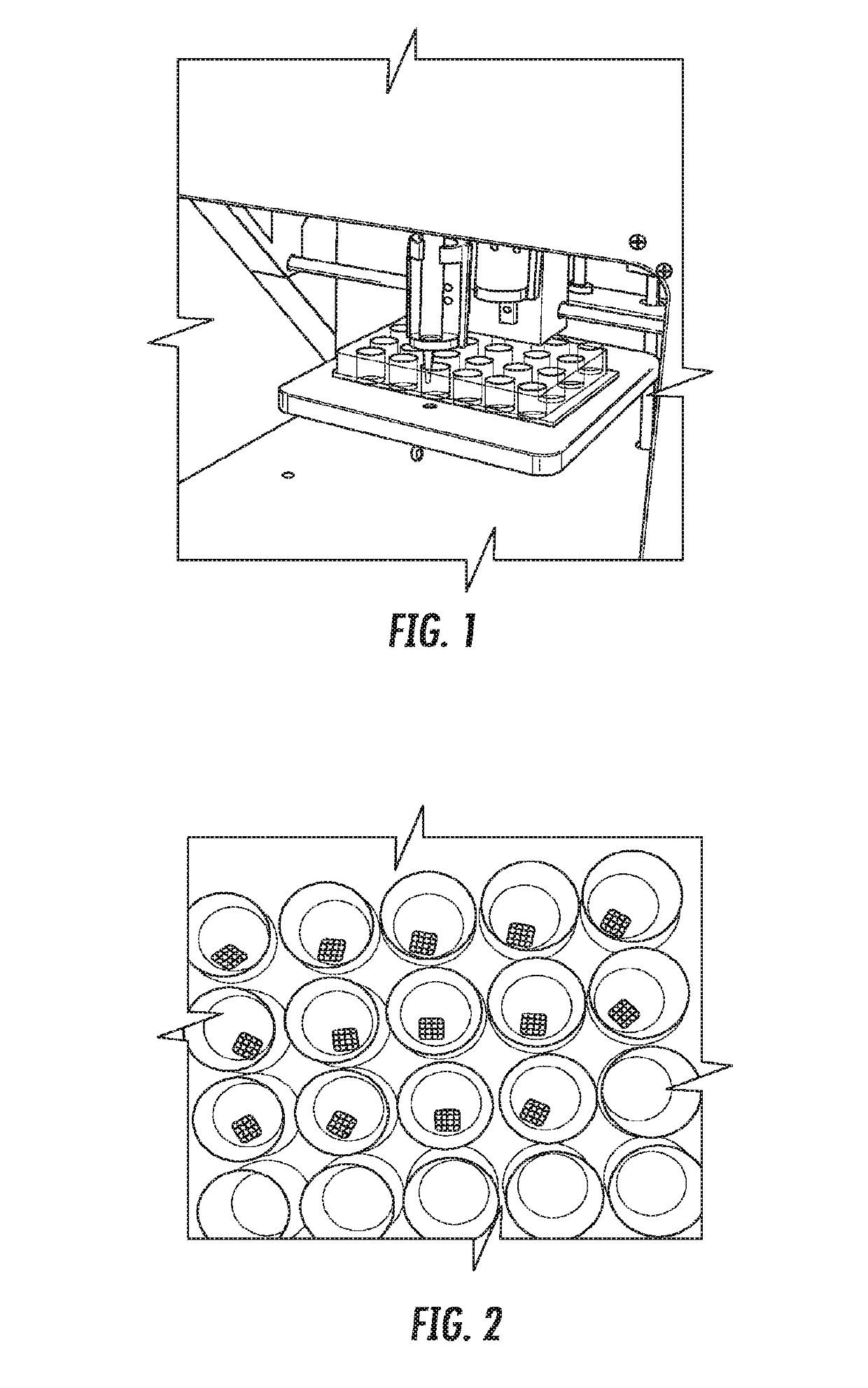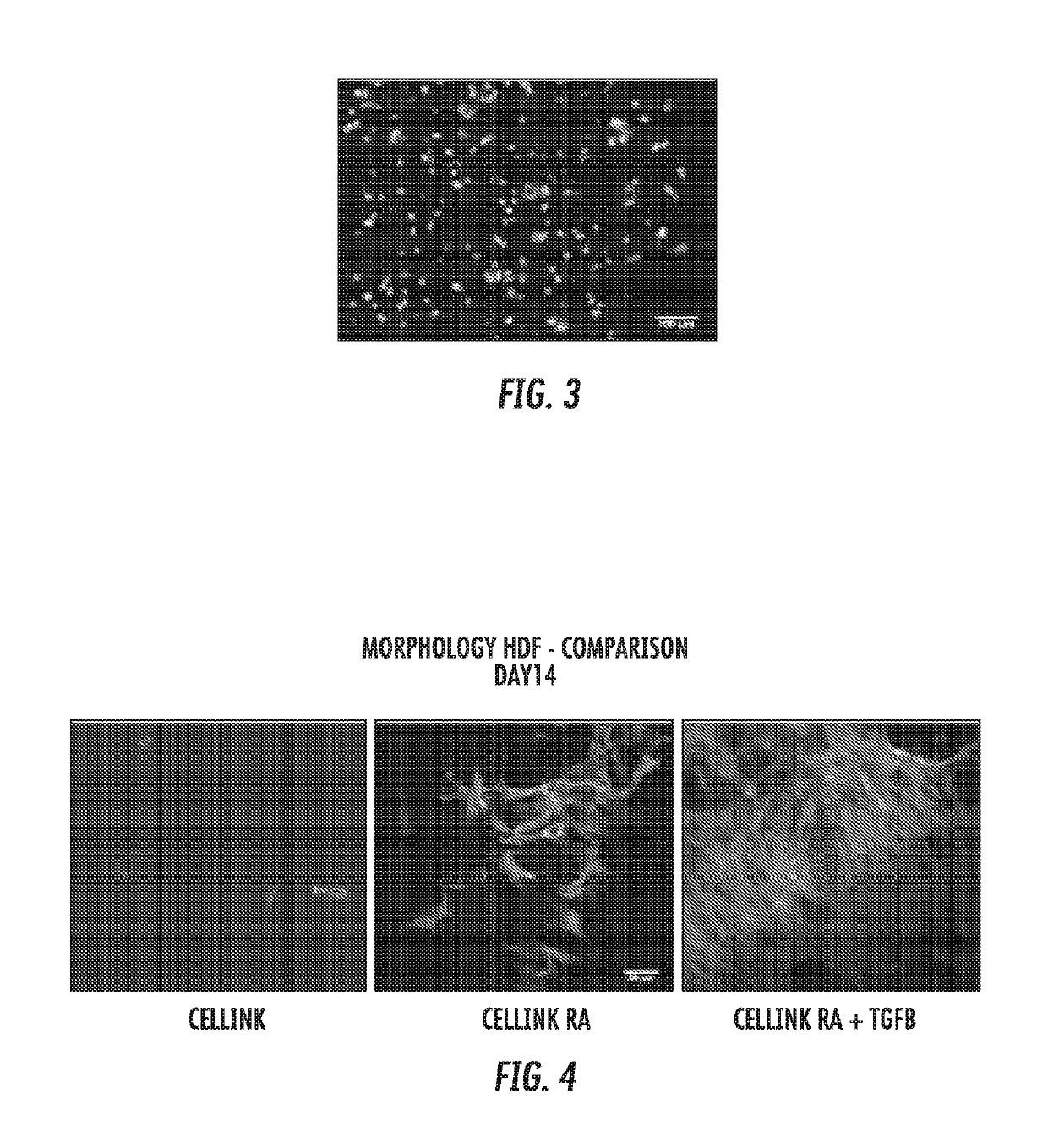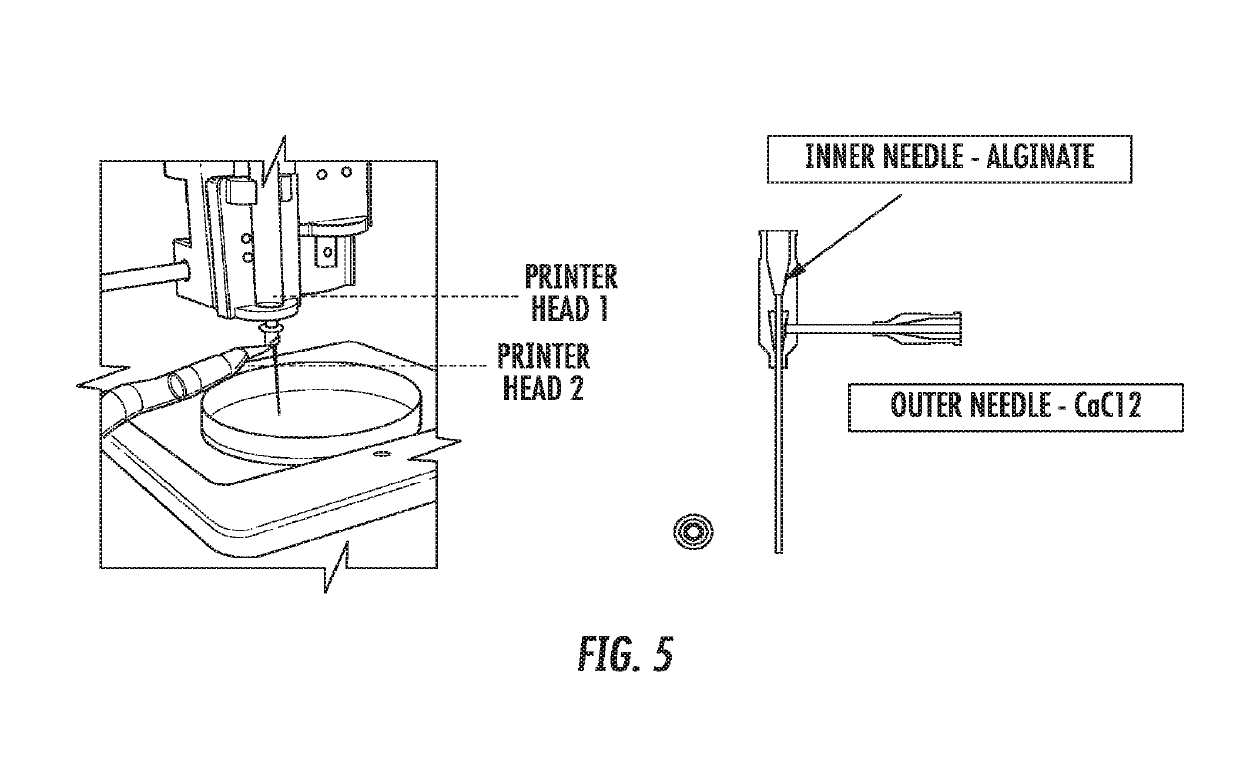Preparation and applications of rgd conjugated polysaccharide bioinks with or without fibrin for 3D bioprinting of human skin with novel printing head for use as model for testing cosmetics and for transplantation
a technology of conjugated polysaccharide and bioink, which is applied in the field of hydrogels based on polysaccharides, can solve the problems of burnt patients lacking undamaged skin to be transplanted, damage to the skin, and wrinkles,
- Summary
- Abstract
- Description
- Claims
- Application Information
AI Technical Summary
Benefits of technology
Problems solved by technology
Method used
Image
Examples
example 1
[0023]3D Bioprinting of Dermis-Like Model
[0024]Two different bioinks were prepared. The first bioink was composed of pure alginate with addition of nanocellulose to control rheological properties. The second bioink was prepared by combining RGD-modified alginate with nanocellulose to control rheological properties. Both bioinks had good printability. Six million primary human fibroblasts passage #3 were thawed and seeded into two 150 cm2 T-flasks. When the culture reached approximately 90% confluence, the cells were harvested using TrypLE and the flask was gently tapped to make the cells detach from the surface. The cells were counted (1.9 M cells / mL) with Tryphan-blue staining and the cell viability was calculated to ensure the cells were alive. The cells were then centrifuged and resuspended in medium and then seeded with 2,500 cells / cm2 into a T150 flask. The medium (DMEM, 1% GlutaMAX with 10% FBS and 1% Pen / Strep with phenol red) was changed three times per week. The cells were ...
example 2
3D Bioprinting of Full Skin with Nanocellulose, Alginate RGD and Fibrin Bioink
[0025]Bioinks were prepared using aseptic techniques from fibrinogen powder purchased from Sigma and hydrogels of 3% nanocellulose and 2.6% alginate conjugated with GRGDSP-peptides acquired from FMC Biopolymers, NovaMatrix. The inks were made by mixing the components into homogeneous hydrogels. For the inks containing fibrinogen, the nanocellulose and alginate hydrogels were first mixed and the fibrinogen was dissolved with 200 μL / 10 mg fibrinogen tris Buffered Saline (TBS) acquired from Fisher BioReagents. By using a SpeedMixer™ DAC 150.1 FV-K, the fibrinogen was mixed in the hydrogel to a homogeneous hydrogel composed of fibrinogen, nanocellulose and alginate. Different amounts of fibrinogen were added to hydrogel bioinks ranging from 10 mg to 500 mg per 1 ml bioink. Two different types of cells were used; primary adult human dermal fibroblasts (aHDFs) and primary human epidermal keratinocytes (HEKs) bot...
example 3
3D Bioprinting of Constructs with Coaxial Needle
[0026]The constructs composed of fibroblasts laden RGD-alginate were prepared by 3D Bioprinting using a coaxial needle (see FIG. 5). The inner part of the needle was used to print with fibroblasts mixed with RGD-alginate whereas the outer part of the needle was used to eject 100 mmol solution of CaCl2. Good printing fidelity was achieved using this method. In another experiment, fibroblasts laden RGD-alginate was combined with fibrinogen and 3D bioprinted using a coaxial needle. The inner part of the needle was used to print with fibroblasts mixed with RGD-alginate and fibrinogen whereas the outer part of the needle was used to eject thrombin solution dissolved in 100 mmol CaCl2 solution. Good printing fidelity was achieved using this method.
PUM
 Login to View More
Login to View More Abstract
Description
Claims
Application Information
 Login to View More
Login to View More - R&D
- Intellectual Property
- Life Sciences
- Materials
- Tech Scout
- Unparalleled Data Quality
- Higher Quality Content
- 60% Fewer Hallucinations
Browse by: Latest US Patents, China's latest patents, Technical Efficacy Thesaurus, Application Domain, Technology Topic, Popular Technical Reports.
© 2025 PatSnap. All rights reserved.Legal|Privacy policy|Modern Slavery Act Transparency Statement|Sitemap|About US| Contact US: help@patsnap.com



